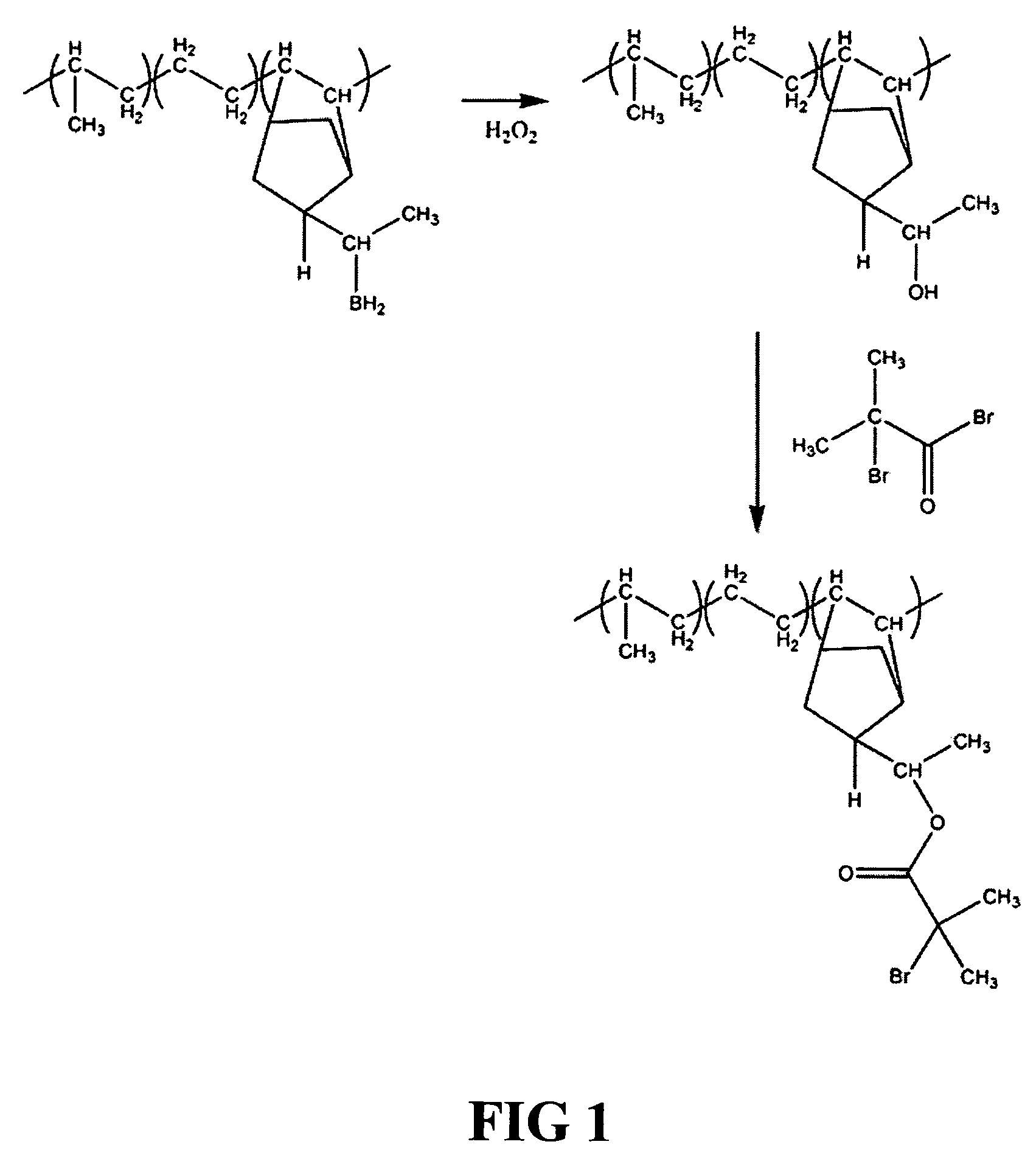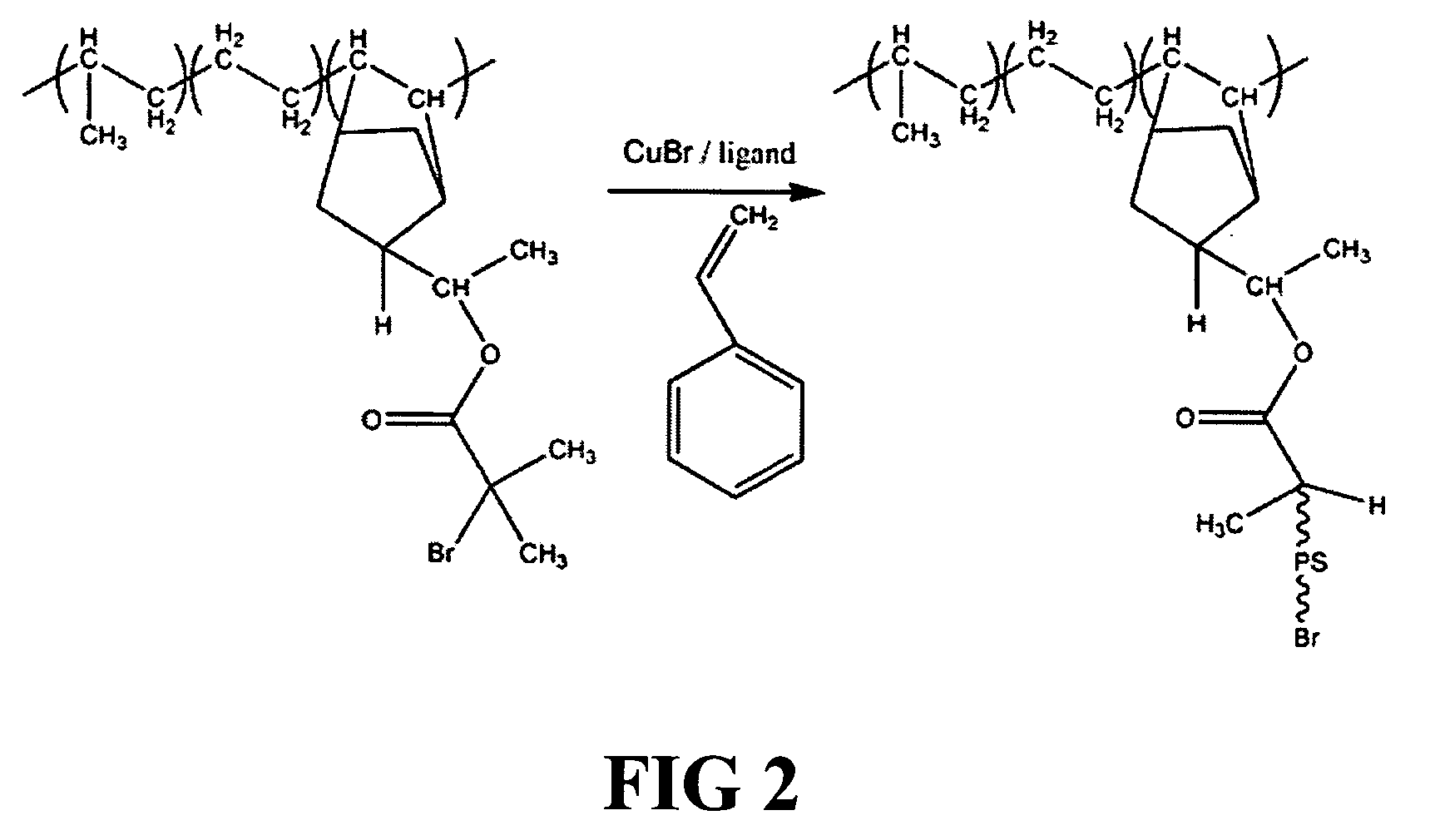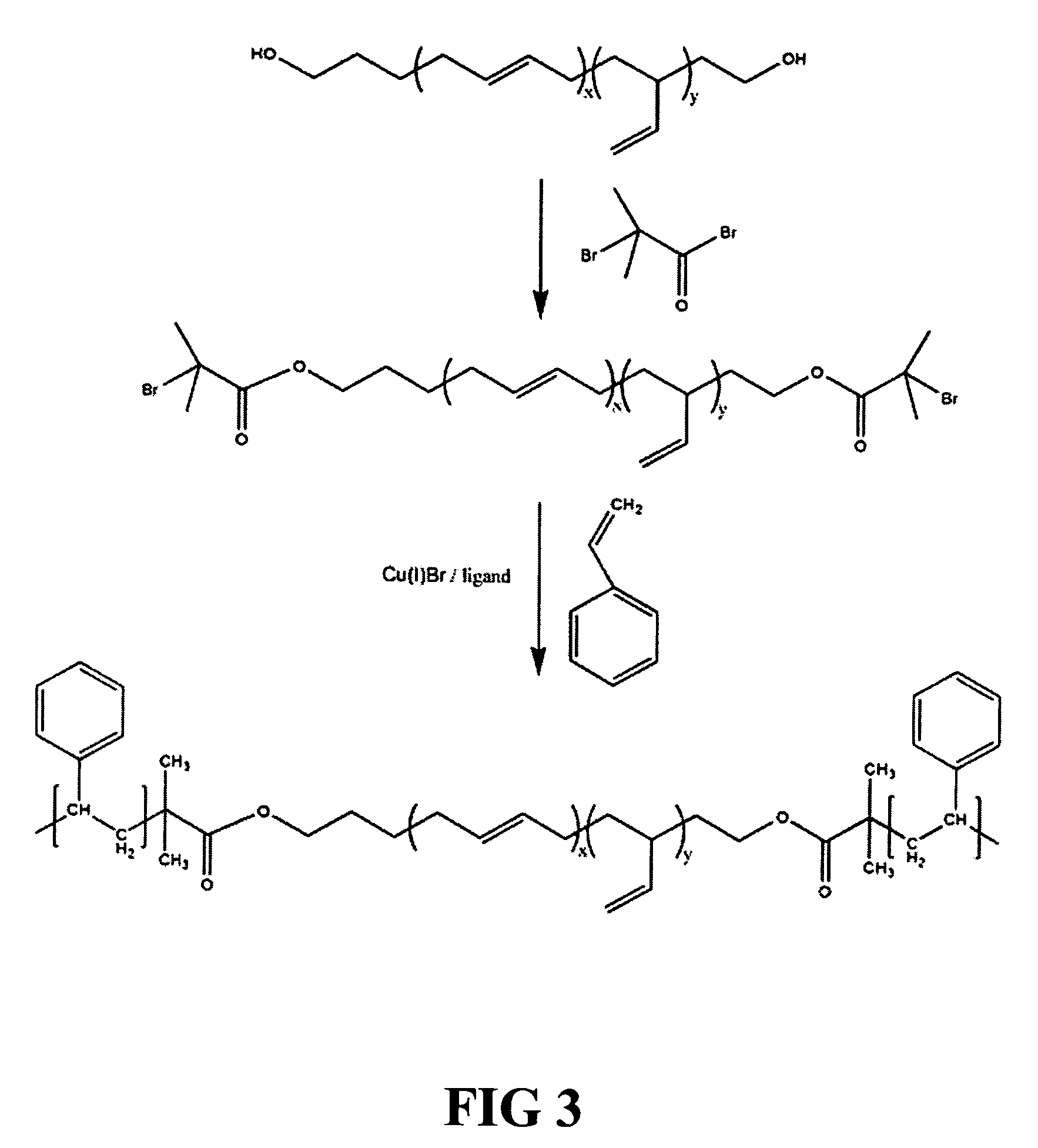Medical devices containing radiation resistant block copolymer
- Summary
- Abstract
- Description
- Claims
- Application Information
AI Technical Summary
Benefits of technology
Problems solved by technology
Method used
Image
Examples
example 1
Synthesis of EPDM-Based Block Copolymer
[0105] 1. Synthesis of EPDM Macroinitiator
[0106] A low Tg hydrocarbon polymer block is prepared from EPDM (ethylene-propylene-diene monomer) copolymer blocks (e.g., Vistalon™ polymers from Exxon-Mobil), as described above. The EPDM block copolymer comprises ethylene, propylene and a diene termonomer block, in this case, ethylidene norbornene. End-functional groups are formed on the EPDM by hydroboration of the diene monomers with 9-BBN (9-borabicyclo[3.3.1]nonane), followed by reaction with hydrogen peroxide. Hydroboration of alkenes generally involves attack of the double bond of the ethylidene norbornene monomer by BH3 to form a 4-membered ring transition state (‡), as follows:
[0107] The addition of peroxide resolves the transition state into the alcohol, providing a hydroxyl end-functional group. The hydroxyl groups are then reacted with 2-bromo-isobutyryl bromide to form the EPDM with bromoester end functional groups (EPDM macroinitiato...
example 2
Synthesis of Polyolefin-Based Graft Copolymers
[0110] A low Tg hydrocarbon polymer block is prepared from functionalized polydiene and polyolefin blocks, such as those which are commercially available with functionalized end groups as poLichelic™ polymers from FMC Lithium (Gastonia, N.C.). For example, the following diol and triols of polyolefins are utilized to formulate the polymeric materials and devices of the present invention.
[0111] These materials are used in separate experiments to yield linear A-B-A triblock copolymers having a low Tg hydrocarbon midblock and high Tg polymer end blocks such as polystyrene endblocks. A polyolefin copolymer is prepared by first reacting a di-hydroxy-terminated poly(olefin) with 2-bromo-isobutyryl bromide. This forms a macroinitiator with two α-bromoester groups. These groups can be used to initiate the polymerization of styrene to form the triblock copolymer via atom transfer radical polymerization techniques or other controlled / living radi...
PUM
 Login to View More
Login to View More Abstract
Description
Claims
Application Information
 Login to View More
Login to View More - R&D
- Intellectual Property
- Life Sciences
- Materials
- Tech Scout
- Unparalleled Data Quality
- Higher Quality Content
- 60% Fewer Hallucinations
Browse by: Latest US Patents, China's latest patents, Technical Efficacy Thesaurus, Application Domain, Technology Topic, Popular Technical Reports.
© 2025 PatSnap. All rights reserved.Legal|Privacy policy|Modern Slavery Act Transparency Statement|Sitemap|About US| Contact US: help@patsnap.com



